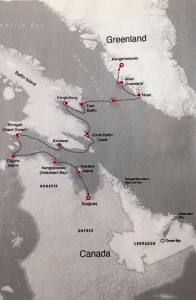A Placemaking Journal
Kangiqsujuaq: Heart of the Arctic
Day 3
Sunday, July 19, 2015
Overnight, we entered Hudson’s Straight, where an immense amount of water comes from the Atlantic Ocean, creating massive tides and whirlpools of mythic proportions. With an early wakeup call, we headed to Kangiqsujuaq, a small community of 720 Inuit, a few of whom joined us on the ship for breakfast.
Kangiqsujuaq means “big bay,” and it truly was. Wakem Bay is named after William Wakem, who was exploring to see if there was a passage to bring wheat from the prairies to Europe. The landform is a gorgeous fiord about 20 km long, carved by glaciers. The gneiss (pronounced nice) rocks are a banded light and dark colour.
This is the Cape Smith Volcanic Belt, where the ocean closed 1.82 billion years ago. The Crystal Eye of Nunavik is a 1400 foot deep crater that is 1.4 million years old. Its almost 900 foot deep lake is the purest fresh water in the world. There is an excellent installation about the crater and its history in the Interpretation Center of the Québec National Park. The Raglan Mine is a large nickel mining complex nearby.
In town, we walked the streets and learned a fun Inuit game called longball, a cross between baseball and cricket, played inside in the gym with 2×4’s as bats and tennis balls. Afterwards, we met elders to share with us beluga meat, caribou, arctic char, bannock, fresh blueberries, and local greens. They helped us understand the importance of limited whaling to the community.
Today we tried beluga muktuk, which was surprisingly chewy. It tastes like a little piece of rubber drenched in butter, but it’s packed with loads of nutrients, including more vitamin C per weight than oranges. My 10-year old said it tastes like “invincible jello.”
Compared with dolphins, beluga flippers and tails are quite small, which along with their blubber, keeps them warm in cold water. Thanks to these adaptations, belugas don’t swim as fast, so their white color helps them camouflage in the ice. Killer whales and polar bears are their primary predators.
They also have belly buttons because they are mammals, along with nipples for nursing milk that is richer than ice cream, at 50% fat. They also have muscles around their nipples, to squirt the milk so the babies can drink faster between resurfacing to breathe. Like an Inuit baby, a beluga baby swims on its mom’s back, with the currents going over its body and pushing forward to keep them together.
A couple of young local women treated us to a concert of throat signing, which is also a game. The leader sets the rhythm, pace and sound. The follower repeats the sound. Whoever makes the other laugh first wins. We learned some rudimentary methods ourselves, competing with half of the ship against the other half. It created a whole lot of laughter amid our coughing at the ticklish reverberations.
We got to wander around on the tundra, and saw an exceptional collection of beautiful, tiny flowers. Including arctic poppies (papaver), whose whole flower acts likes like a parabola that constantly follows the sun. As it does, it is always growing higher. The parabola is to tempt insects to come pollinate because the shape traps heat to keep them warm.
After our visit to Kangiqsujuaq, we were treated to insights from what really feels like a floating university. Chef Tojo San, the originator of the California roll, prepared dinner for a small group of us, and taught us how to make our own rolls. Back in 1974, he’s also the one who invented the inside-out roll. The Wall Street Journal rates Tojo San as one of the top 10 sushi chefs in the world, so tonight’s class had our full attention.
One of my other favorite lectures for the day was on polar bears, a relatively recent evolutionary species, evolving from grisly bears. One of the most sexually dimorphic animals in the world, the males weigh up to 1500 to 1800 pounds, but with tremendous weight fluctuations for females, who can be as big as 700 pounds in the summer, but down to 213 pounds after winter.
Males are 8’ to 9’ tall, 4’ or so at the shoulder, and take the title of the world’s largest land carnivore. Males outnumber females 3:1 as far as how often they are ready to breed, which makes for a very ferocious animal.
Churchill, Manitoba is the Times Square for bears. The best time to go is October, and when you see two males sparring then, they’re just playing. In April, it’s serious, ferocious fighting that often leads to broken teeth or worse. The largest bear usually wins, contributing to the evolution of the animals breeding bigger, ferocious bears.
The global polar bear population is 30,000, of which 17,500 live in Canada.
Delayed implantation occurs, so that mating happens in April but pregnancy not until September. From Churchill northward, the bears have ice caves that stay around -20 C, instead of -40 C or so outside. The babies are born in November or December, at only a couple of pounds. Southern bears usually have 2 to 3 young, nursing at 33% fat milk. In the north, that’s usually 1 to 2.
When the cubs reach about 50 pounds, it’s usually April and time to leave the cave. The mother bear has not eaten since she got off the ice the previous June or July, and has been nursing all winter. She has from April to May to eat seals to restock her internal food supply. This is the key to this great change that the planet is experiencing, with its impact on the bears, who’s females only get 4 to 6 weeks per year to hunt every year.
It’s hard to be a bear. To kill seals. The cubs watch their moms for about 2.5 years, learning to hunt, and nursing all the while. Then one day she walks away, when they are teens, and they will never see her again. It takes them 3 to 5 years to mature. The average age is only in their 20’s, and the oldest recorded bear reached 35.
Bears live mainly on seals and whales, and are less likely hunt the walrus. At 4,000 pounds, they’re like a mini van with tusks. Walrus behave like a vacuum cleaner, sucking mussels from the bottom of the ocean. There are millions of seals, and ringed seals are the polar bears favourite.
When it comes to sense of smell, a human is to a Labrador dog, as a Labrador dog is to the polar bear. They can smell a female 50 miles away. And can smell the seal in its lair, which is handy since an adult bear may eat 3 seals a week.
If the Arctic becomes ice free by 2100, the bear population will shrink precipitously. But nature is not a machine; it is alive. We are 2.8 billion years old because the planet has done everything it can to stay alive. So it’s tough to say what will happen to the bears, exactly.
Today didn’t turn up an specific placemaking lessons, but did firmly reinforce the importance of preservation and protection of our awesome wilderness regions.
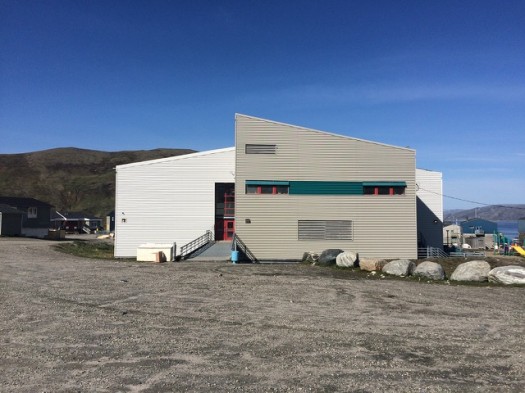
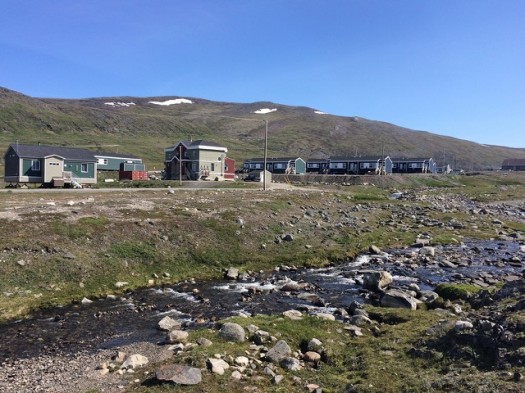
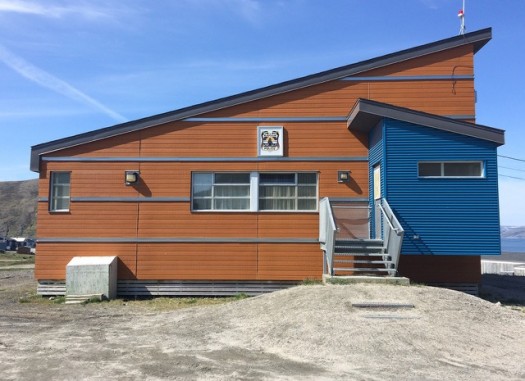
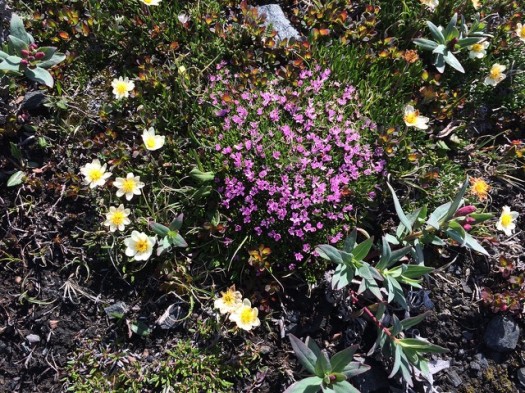
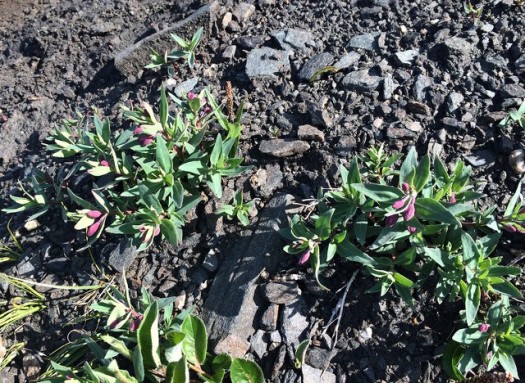
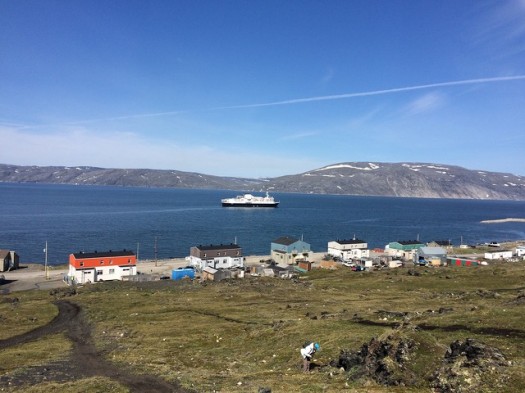
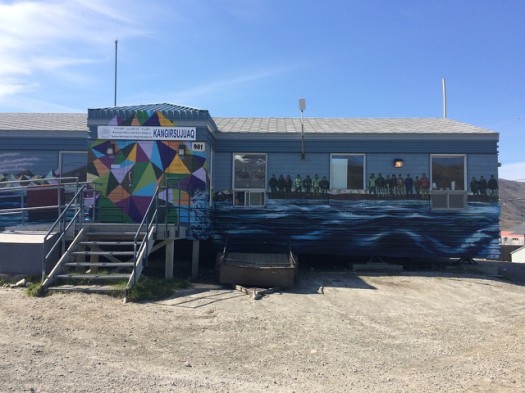
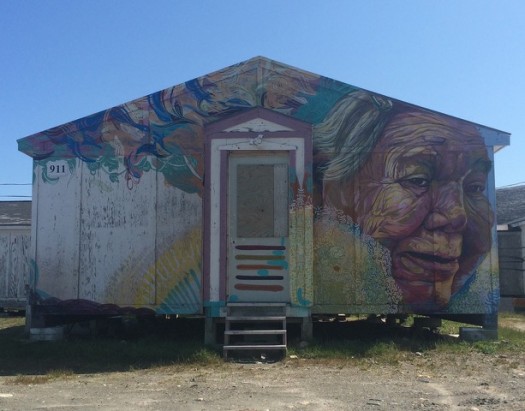
To read the entire Heart of the Arctic series, go here.
–Hazel Borys
If PlaceShakers is our soapbox, our Facebook page is where we step down, grab a drink and enjoy a little conversation. Looking for a heads-up on the latest community-building news and perspective from around the web? Click through and “Like” us and we’ll keep you in the loop.









